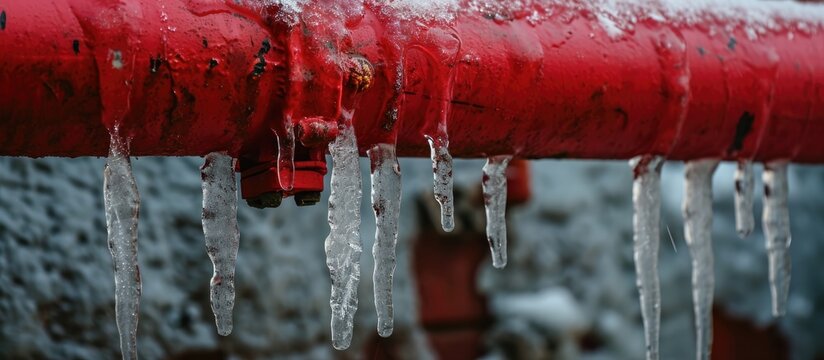Important Tips to Avoid Frozen Pipes in Cold Weather
Important Tips to Avoid Frozen Pipes in Cold Weather
Blog Article
Each person will have their own individual thinking about How To Avoid Freezing Pipes.

Cold weather can wreak havoc on your pipes, specifically by freezing pipes. Here's exactly how to prevent it from happening and what to do if it does.
Introduction
As temperatures decline, the danger of icy pipelines increases, potentially causing expensive fixings and water damage. Recognizing exactly how to prevent icy pipes is important for property owners in cold climates.
Recognizing Frozen Pipelines
What causes pipes to freeze?
Pipes ice up when revealed to temperatures below 32 ° F (0 ° C) for expanded durations. As water inside the pipelines freezes, it broadens, putting pressure on the pipe wall surfaces and possibly triggering them to burst.
Dangers and problems
Frozen pipes can bring about water system disruptions, residential or commercial property damages, and pricey fixings. Ruptured pipelines can flooding homes and create substantial structural damages.
Signs of Frozen Pipes
Determining icy pipelines early can prevent them from bursting.
Just how to identify icy pipes
Search for reduced water circulation from taps, unusual smells or noises from pipes, and visible frost on revealed pipelines.
Avoidance Tips
Shielding prone pipes
Wrap pipes in insulation sleeves or utilize warmth tape to secure them from freezing temperature levels. Concentrate on pipes in unheated or external locations of the home.
Home heating methods
Maintain indoor rooms adequately heated up, especially locations with pipes. Open up cupboard doors to permit warm air to flow around pipelines under sinks.
Protecting Exterior Pipes
Yard hose pipes and outside taps
Detach and drain yard tubes prior to winter season. Mount frost-proof faucets or cover exterior faucets with insulated caps.
What to Do If Your Pipes Freeze
Immediate activities to take
If you suspect frozen pipes, maintain faucets open up to alleviate pressure as the ice thaws. Make use of a hairdryer or towels taken in warm water to thaw pipelines slowly.
Long-Term Solutions
Structural changes
Take into consideration rerouting pipes away from exterior wall surfaces or unheated locations. Add additional insulation to attic rooms, basements, and crawl spaces.
Upgrading insulation
Purchase high-quality insulation for pipelines, attic rooms, and walls. Appropriate insulation helps keep consistent temperature levels and minimizes the risk of icy pipes.
Conclusion
Preventing frozen pipes needs positive procedures and quick actions. By recognizing the causes, signs, and safety nets, house owners can shield their pipes during cold weather.
5 Ways to Prevent Frozen Pipes
Drain Outdoor Faucets and Disconnect Hoses
First, close the shut-off valve that controls the flow of water in the pipe to your outdoor faucet. Then, head outside to disconnect and drain your hose and open the outdoor faucet to allow the water to completely drain out of the line. Turn off the faucet when done. Finally, head back to the shut-off valve and drain the remaining water inside the pipe into a bucket or container. Additionally, if you have a home irrigation system, you should consider hiring an expert to clear the system of water each year.
Insulate Pipes
One of the best and most cost-effective methods for preventing frozen water pipes is to wrap your pipes with insulation. This is especially important for areas in your home that aren’t exposed to heat, such as an attic. We suggest using foam sleeves, which can typically be found at your local hardware store.
Keep Heat Running at 65
Your pipes are located inside your walls, and the temperature there is much colder than the rest of the house. To prevent your pipes from freezing, The Insurance Information Institute suggests that you keep your home heated to at least 65 degrees, even when traveling. You may want to invest in smart devices that can keep an eye on the temperature in your home while you’re away.
Leave Water Dripping
Moving water — even a small trickle — can prevent ice from forming inside your pipes. When freezing temps are imminent, start a drip of water from all faucets that serve exposed pipes. Leaving a few faucets running will also help relieve pressure inside the pipes and help prevent a rupture if the water inside freezes.
Open Cupboard Doors
Warm your kitchen and bathroom pipes by opening cupboards and vanities. You should also leave your interior doors ajar to help warm air circulate evenly throughout your home.

I found that blog entry on How to prepare your home plumbing for winter weather when doing a lookup on the web. Sharing is nice. One never knows, you may just be doing someone a favor. I thank you for your readership.
Visit Page Report this page